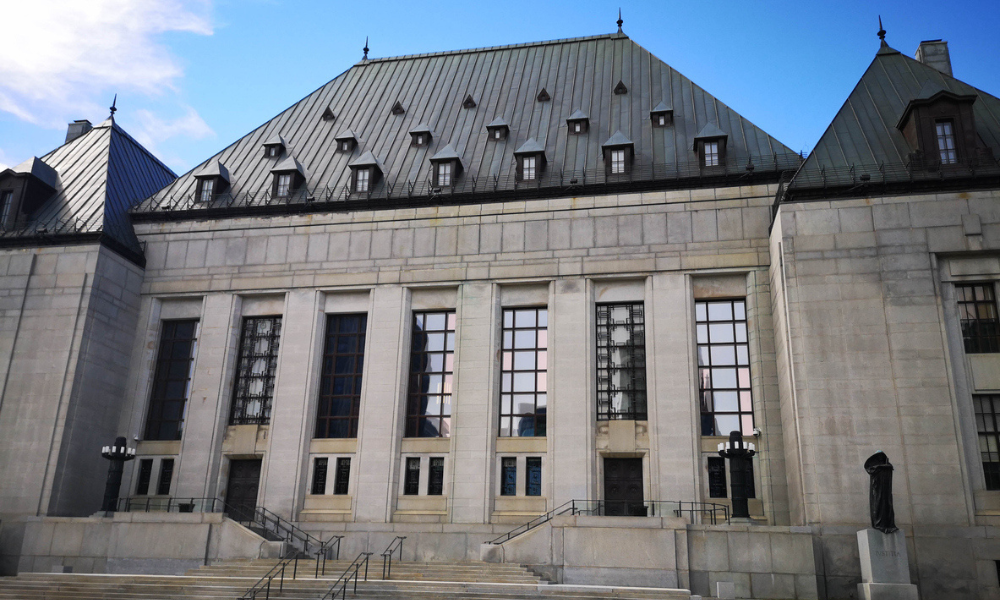With a flurry of elections that has seen the end of long-standing governments in Ontario and Alberta and shifts in policy, combined with the federal government’s inability to move forward on any major energy infrastructure projects, the risk is real.

Shortly after the Conservative government was elected in Ontario, it quickly carried out one of its main campaign promises and introduced legislation to scrap the former Liberal government’s cap and trade scheme.
Known as Bill 4, the Cap and Trade Cancellation Act, 2018 repeals Ontario’s ballyhooed Climate Change Mitigation and Low-carbon Economy Act, 2016 and eliminates cap and trade instruments.
However, the bill goes much further than that. It includes provisions that will limit compensation to a small percentage of companies that have purchased cap and trade instruments.
Parties registered to participate under the previous legislation that won’t be compensated include electricity importers, natural gas distributors and companies that operate equipment related to the transmission, storage and transportation of natural gas, supply petroleum products for consumption in Ontario or operate certain transmission systems.
To add insult to injury, the government included a Crown immunity clause that prevents companies from pursuing litigation for the shift in policy despite the millions of dollars they may have invested into Ontario’s green energy initiatives.
At the same time, Ontario scrapped the White Pines Wind Project, a planned nine-turbine wind facility already under construction in central Ontario.
The moves caught the attention of infrastructure lawyers. Patrick Duffy, co-head of the project development & finance group at Stikeman Elliott LLP in Toronto, says it’s a sign that sovereign or political risk is playing a bigger role in projects and needs to be on the radar screen of in-house legal teams operating in the infrastructure space.
Rob Seidel, Canada managing partner for DLA Piper who works on infrastructure financing deals, agrees that “political risk is on the rise in Canada relative to other jurisdictions.”
When it comes to infrastructure, Seidel says, companies “have to be very sensitive to the impact of political risk real or perceived.”
Duffy notes that since the 1990s Canada has been viewed as a stable infrastructure market since the 1990s. However, with a flurry of elections in the past couple of years that has seen the end of long-standing governments in Ontario and Alberta and shifts in policy, combined with the federal government’s inability to move forward on any major energy infrastructure projects, Duffy says, “the risk does seem to be rising.”
Take B.C. for example. The NDP government scrapped plans to build a new bridge to replace the Massey Tunnel and ease Metro Vancouver traffic congestion — a pet project of the previous provincial Liberal government.
However, it’s not just Canada. There’s a general unease in the political sphere globally as governments topple or teeter in many western democracies, which is excepted to impact infrastructure. Everything from Brexit to U.S-initiated trade and treaty wars and a tightening of foreign investment regimes around the globe will impact companies involved in building infrastructure.
Maxine Ethier, global head of the infrastructure group at Baker McKenzie LLP, says sovereign risk in the infrastructure space is “definitely” on the rise globally.
“You can see all of the countries are starting to look at their foreign investment rules,” with a view to tightening them, she says.
For example, the United States recently introduced the Foreign Investment Risk Review Modernization Act of 2018.
Ethier says that will change the law governing the Committee on Foreign Investment in the United States, known as the CFIUS Committee. It’s being driven by national security concern over growing Chinese investments, but it will capture all foreign investors and expands CFIUS’s jurisdiction to scrutinize in-bound investment. CFIUS will have the ability to examine non-passive investment in companies that own, operate or supply “critical infrastructure” as well as real estate purchases next to “sensitive” U.S. government property.
Ethier says clients will have to be “more mindful” of who their investing partners are, particularly when looking to buy or build critical infrastructure. The U.S. defines “critical infrastructure” as “systems and assets, whether physical or virtual, so vital to the United States that the incapacity or destruction of such systems and assets would have a debilitating impact on security, national economic security, national public health or safety or any combination of these matters.” That includes a range of things from communications to dams, transportation systems, waste water, health care and energy, among others.
However, it’s not just the U.S. that is looking at these issues. In a global foreign investment review report, Baker McKenzie found that six of the eight advanced economies have either modified their foreign investment laws since 2014 or plan to do so. The European Union also plans to change its foreign investment rules.
The report says that most cross-border transactions will likely go through, but those in “sensitive sectors may encounter more scrutiny and a prolonged approval process.”
It also found that the most scrutinized industries worldwide included not only critical infrastructure but telecommunications, energy, natural resources and agriculture, among others.
Linda Brown, a partner at McCarthy Tétrault LLP in Vancouver who works on infrastructure deals, says, however, “I don’t think the awareness around political risk is anything new. It’s always been on people’s minds.”
It’s particularly true in a province such as British Columbia, where governments change frequently. “It’s always been polarized, much more than Ontario,” Brown says.
Moreover, while the NDP scrapped the Massey Bridge project, Brown says the government is moving ahead on other fronts, such as transit. In September, Prime Minister Justin Trudeau confirmed $1.37 billion in funding for metro Vancouver transit projects, including $3 billion for the Broadway subway and Surrey LRT projects.
As well, transit projects continue in Ontario, despite a new government, and Quebec, which has a new Coalition Avenir Québec government following its recent election.
Cap and trade aside, lawyers say that the change of government in Ontario isn’t expected to upend too much on the infrastructure front, despite the government looking to cut back on $6 billion in spending.
In fact, some lawyers say it could be a boon for public-private partnerships. Many of the Ontario ministers are hiring former government staffers from former prime minister Stephen Harper’s administration as they ramp up their offices, says Dan Brock, leader of the government relations practice at Fasken Martineau DuMoulin LLP in Toronto. The Harper government was a staunch supporter of P3 projects. “It’s still the early days and they [the Ford government] are figuring out what they want to do” when it comes to infrastructure, says Brock.
He says the Ontario mantra is promoting economic development and it will be interesting to see if the cash-strapped government looks more toward alternative financing models to build needed infrastructure.
“Ontario is a pretty stable market for these types of procurements [P3s],” says Greg Southam, a partner in the infrastructure practice at Davies Ward Phillips & Vineberg LLP in Toronto. He says that, while there is “some concern” about the Hamilton LRT project, he expects Ontario to continue down the P3 path.
As for Alberta, Seidel says, things are relatively quiet on the domestic infrastructure front, as the provincial government prepares for a 2019 election.
However, Southam says that, with the shifting political winds, there has been some movement in the infrastructure markets away from design, build, finance and operate to design, build and finance, as governments decide to remain operators.
Southam says that “there is so much private money out there that needs to get placed,” he doesn’t see a dampening effect on infrastructure projects any time soon.
However, it’s a different story when it comes to projects that have a national interest. The Federal Court ruling that upended the Trans Mountain pipeline, along with the growing slag heap of national energy projects that have failed to get off the ground or been scrapped, has lawyers worried.
Southam says the federal government has “lost the will power” to say there is a national interest in building pipelines. He cites the Canadian Pacific Railway as an example of the leadership necessary to build a national interest project. “I don’t think we would be able to build it today,” he says of the railway.
“The national interest card hasn’t been played and it should be,” says Southam, noting that the federal government is not using the powers it has to push forward important energy infrastructure projects.
Moreover, some lawyers report that clients are now starting to ask questions about Canada’s appetite for foreign investment given some of the political upheaval.
Seidel says, “I get a lot of questions from people outside of Canada who ask what is going on. I didn’t get those questions before.”
Southam notes that foreign investors have largely shunned Alberta’s oilpatch. “There’s a real concern about the ability to get larger projects done.”
Duffy adds that a rise in political risk has drawbacks that inhouse lawyers need to consider. He notes the greater the risk the higher the reward, so expect interest charges to creep up if financiers think there is more political risk in projects, as governments and policy direction changes.
As well, he says, lawyers should be vetting their infrastructure contracts to ensure they have clauses to protect them from discriminatory action if a new government comes in and changes the law. He says if a government “effects a change that has impact on the economics of a project,” companies need to be protected.
As well, he says, inhouse lawyers need to make sure that they are structuring their deals with partners properly so that they can take advantage of trade treaties, such as NAFTA (assuming it is still in place), which can provide companies some protection from legislative action and allow them to claim damages.
Price-hedging strategies to account for things such as steel tariffs is also important, lawyers note.
Probably the biggest area that in-house legal departments need to make sure their company is focused on is government relations, which is increasingly falling under the reporting lines of general counsel.
Fasken’s Brock says “it’s about understanding and analyzing policies that affect your project. It’s important to have people who understand those processes and policies.”
He says it’s not just at the political level, but there are three legs to the government relations stool. There is the executive branch, comprising ministers who make decisions, the legislative branch, which includes all the elected officials from the different parties, and the civil service. “You want to have one approach that takes into consideration all three.
“The motivations and the interests of those three audiences are going to be distinctive.”
Most importantly, Brock says, don’t ignore the bureaucrats. The “civil service has a considerable amount of influence on where the government can go and can be important in effecting what a government wants to do.”
Known as Bill 4, the Cap and Trade Cancellation Act, 2018 repeals Ontario’s ballyhooed Climate Change Mitigation and Low-carbon Economy Act, 2016 and eliminates cap and trade instruments.
However, the bill goes much further than that. It includes provisions that will limit compensation to a small percentage of companies that have purchased cap and trade instruments.
Parties registered to participate under the previous legislation that won’t be compensated include electricity importers, natural gas distributors and companies that operate equipment related to the transmission, storage and transportation of natural gas, supply petroleum products for consumption in Ontario or operate certain transmission systems.
To add insult to injury, the government included a Crown immunity clause that prevents companies from pursuing litigation for the shift in policy despite the millions of dollars they may have invested into Ontario’s green energy initiatives.
At the same time, Ontario scrapped the White Pines Wind Project, a planned nine-turbine wind facility already under construction in central Ontario.
The moves caught the attention of infrastructure lawyers. Patrick Duffy, co-head of the project development & finance group at Stikeman Elliott LLP in Toronto, says it’s a sign that sovereign or political risk is playing a bigger role in projects and needs to be on the radar screen of in-house legal teams operating in the infrastructure space.
Rob Seidel, Canada managing partner for DLA Piper who works on infrastructure financing deals, agrees that “political risk is on the rise in Canada relative to other jurisdictions.”
When it comes to infrastructure, Seidel says, companies “have to be very sensitive to the impact of political risk real or perceived.”
Duffy notes that since the 1990s Canada has been viewed as a stable infrastructure market since the 1990s. However, with a flurry of elections in the past couple of years that has seen the end of long-standing governments in Ontario and Alberta and shifts in policy, combined with the federal government’s inability to move forward on any major energy infrastructure projects, Duffy says, “the risk does seem to be rising.”
Take B.C. for example. The NDP government scrapped plans to build a new bridge to replace the Massey Tunnel and ease Metro Vancouver traffic congestion — a pet project of the previous provincial Liberal government.
However, it’s not just Canada. There’s a general unease in the political sphere globally as governments topple or teeter in many western democracies, which is excepted to impact infrastructure. Everything from Brexit to U.S-initiated trade and treaty wars and a tightening of foreign investment regimes around the globe will impact companies involved in building infrastructure.
Maxine Ethier, global head of the infrastructure group at Baker McKenzie LLP, says sovereign risk in the infrastructure space is “definitely” on the rise globally.
“You can see all of the countries are starting to look at their foreign investment rules,” with a view to tightening them, she says.
For example, the United States recently introduced the Foreign Investment Risk Review Modernization Act of 2018.
Ethier says that will change the law governing the Committee on Foreign Investment in the United States, known as the CFIUS Committee. It’s being driven by national security concern over growing Chinese investments, but it will capture all foreign investors and expands CFIUS’s jurisdiction to scrutinize in-bound investment. CFIUS will have the ability to examine non-passive investment in companies that own, operate or supply “critical infrastructure” as well as real estate purchases next to “sensitive” U.S. government property.
Ethier says clients will have to be “more mindful” of who their investing partners are, particularly when looking to buy or build critical infrastructure. The U.S. defines “critical infrastructure” as “systems and assets, whether physical or virtual, so vital to the United States that the incapacity or destruction of such systems and assets would have a debilitating impact on security, national economic security, national public health or safety or any combination of these matters.” That includes a range of things from communications to dams, transportation systems, waste water, health care and energy, among others.
However, it’s not just the U.S. that is looking at these issues. In a global foreign investment review report, Baker McKenzie found that six of the eight advanced economies have either modified their foreign investment laws since 2014 or plan to do so. The European Union also plans to change its foreign investment rules.
The report says that most cross-border transactions will likely go through, but those in “sensitive sectors may encounter more scrutiny and a prolonged approval process.”
It also found that the most scrutinized industries worldwide included not only critical infrastructure but telecommunications, energy, natural resources and agriculture, among others.
Linda Brown, a partner at McCarthy Tétrault LLP in Vancouver who works on infrastructure deals, says, however, “I don’t think the awareness around political risk is anything new. It’s always been on people’s minds.”
It’s particularly true in a province such as British Columbia, where governments change frequently. “It’s always been polarized, much more than Ontario,” Brown says.
Moreover, while the NDP scrapped the Massey Bridge project, Brown says the government is moving ahead on other fronts, such as transit. In September, Prime Minister Justin Trudeau confirmed $1.37 billion in funding for metro Vancouver transit projects, including $3 billion for the Broadway subway and Surrey LRT projects.
As well, transit projects continue in Ontario, despite a new government, and Quebec, which has a new Coalition Avenir Québec government following its recent election.
Cap and trade aside, lawyers say that the change of government in Ontario isn’t expected to upend too much on the infrastructure front, despite the government looking to cut back on $6 billion in spending.
In fact, some lawyers say it could be a boon for public-private partnerships. Many of the Ontario ministers are hiring former government staffers from former prime minister Stephen Harper’s administration as they ramp up their offices, says Dan Brock, leader of the government relations practice at Fasken Martineau DuMoulin LLP in Toronto. The Harper government was a staunch supporter of P3 projects. “It’s still the early days and they [the Ford government] are figuring out what they want to do” when it comes to infrastructure, says Brock.
He says the Ontario mantra is promoting economic development and it will be interesting to see if the cash-strapped government looks more toward alternative financing models to build needed infrastructure.
“Ontario is a pretty stable market for these types of procurements [P3s],” says Greg Southam, a partner in the infrastructure practice at Davies Ward Phillips & Vineberg LLP in Toronto. He says that, while there is “some concern” about the Hamilton LRT project, he expects Ontario to continue down the P3 path.
As for Alberta, Seidel says, things are relatively quiet on the domestic infrastructure front, as the provincial government prepares for a 2019 election.
However, Southam says that, with the shifting political winds, there has been some movement in the infrastructure markets away from design, build, finance and operate to design, build and finance, as governments decide to remain operators.
Southam says that “there is so much private money out there that needs to get placed,” he doesn’t see a dampening effect on infrastructure projects any time soon.
However, it’s a different story when it comes to projects that have a national interest. The Federal Court ruling that upended the Trans Mountain pipeline, along with the growing slag heap of national energy projects that have failed to get off the ground or been scrapped, has lawyers worried.
Southam says the federal government has “lost the will power” to say there is a national interest in building pipelines. He cites the Canadian Pacific Railway as an example of the leadership necessary to build a national interest project. “I don’t think we would be able to build it today,” he says of the railway.
“The national interest card hasn’t been played and it should be,” says Southam, noting that the federal government is not using the powers it has to push forward important energy infrastructure projects.
Moreover, some lawyers report that clients are now starting to ask questions about Canada’s appetite for foreign investment given some of the political upheaval.
Seidel says, “I get a lot of questions from people outside of Canada who ask what is going on. I didn’t get those questions before.”
Southam notes that foreign investors have largely shunned Alberta’s oilpatch. “There’s a real concern about the ability to get larger projects done.”
Duffy adds that a rise in political risk has drawbacks that inhouse lawyers need to consider. He notes the greater the risk the higher the reward, so expect interest charges to creep up if financiers think there is more political risk in projects, as governments and policy direction changes.
As well, he says, lawyers should be vetting their infrastructure contracts to ensure they have clauses to protect them from discriminatory action if a new government comes in and changes the law. He says if a government “effects a change that has impact on the economics of a project,” companies need to be protected.
As well, he says, inhouse lawyers need to make sure that they are structuring their deals with partners properly so that they can take advantage of trade treaties, such as NAFTA (assuming it is still in place), which can provide companies some protection from legislative action and allow them to claim damages.
Price-hedging strategies to account for things such as steel tariffs is also important, lawyers note.
Probably the biggest area that in-house legal departments need to make sure their company is focused on is government relations, which is increasingly falling under the reporting lines of general counsel.
Fasken’s Brock says “it’s about understanding and analyzing policies that affect your project. It’s important to have people who understand those processes and policies.”
He says it’s not just at the political level, but there are three legs to the government relations stool. There is the executive branch, comprising ministers who make decisions, the legislative branch, which includes all the elected officials from the different parties, and the civil service. “You want to have one approach that takes into consideration all three.
“The motivations and the interests of those three audiences are going to be distinctive.”
Most importantly, Brock says, don’t ignore the bureaucrats. The “civil service has a considerable amount of influence on where the government can go and can be important in effecting what a government wants to do.”








